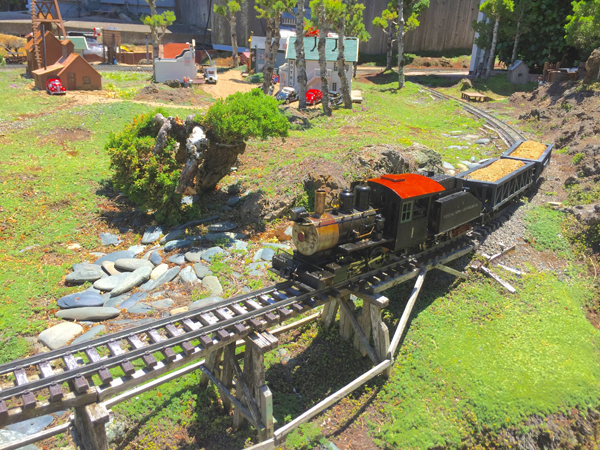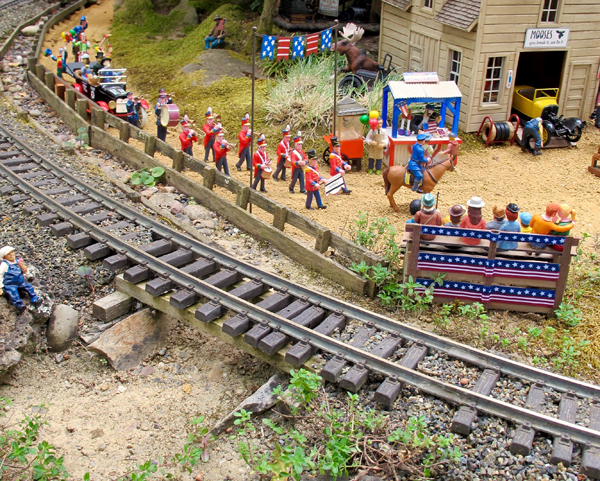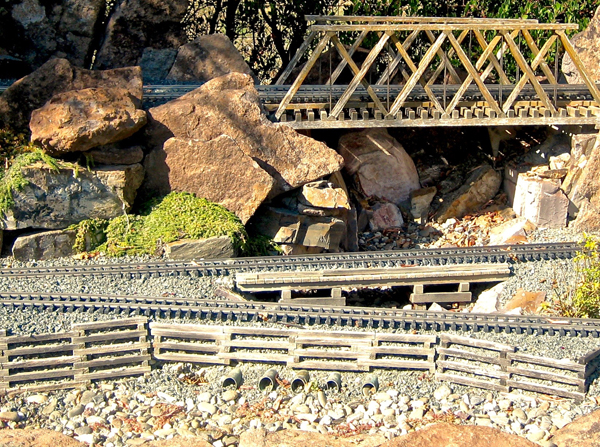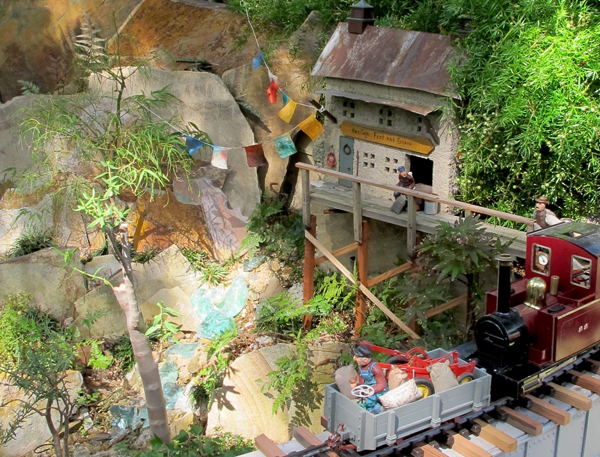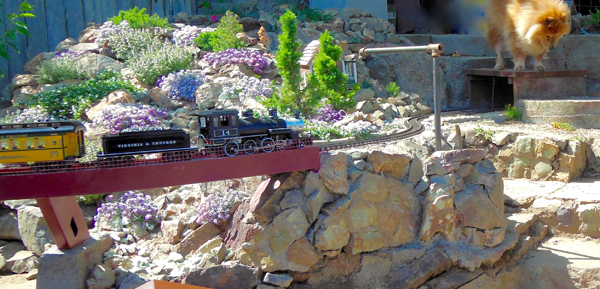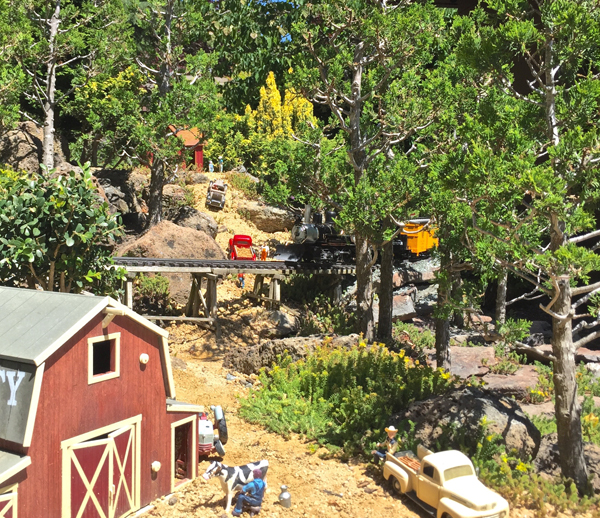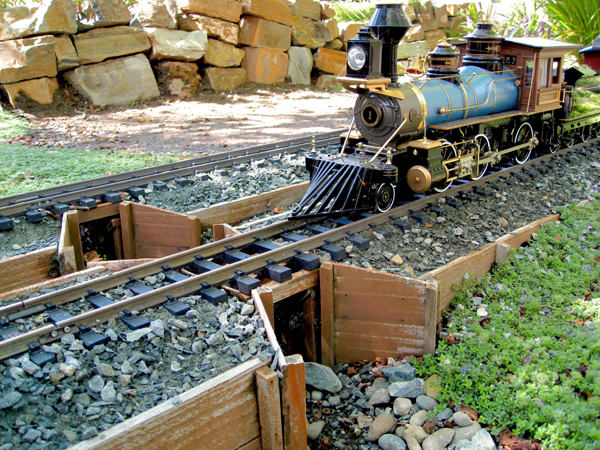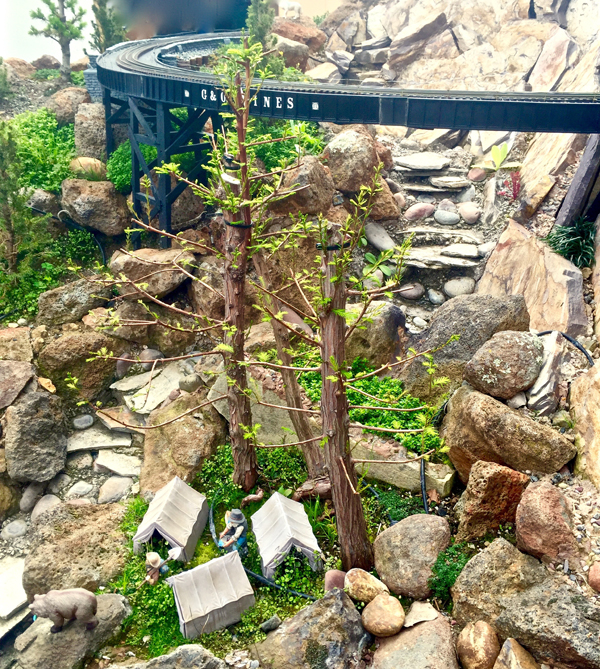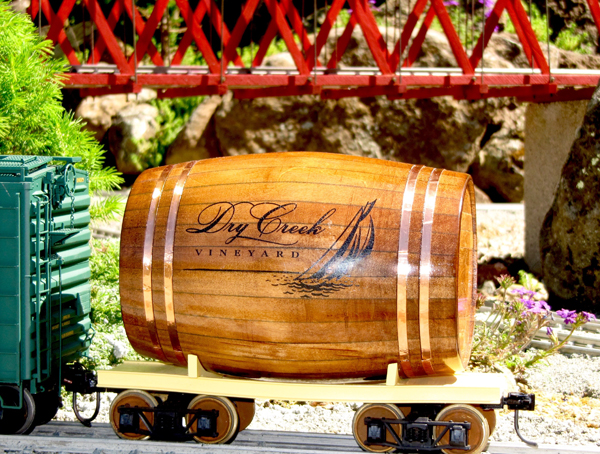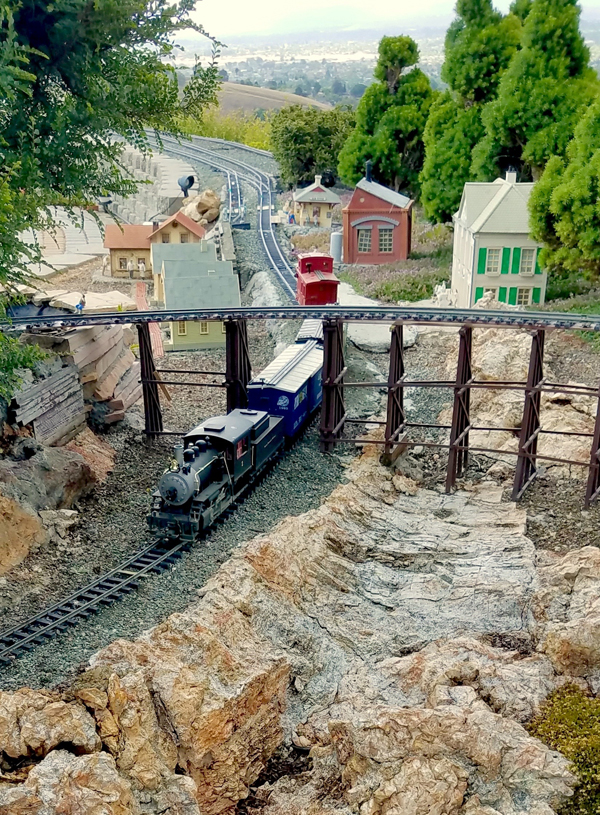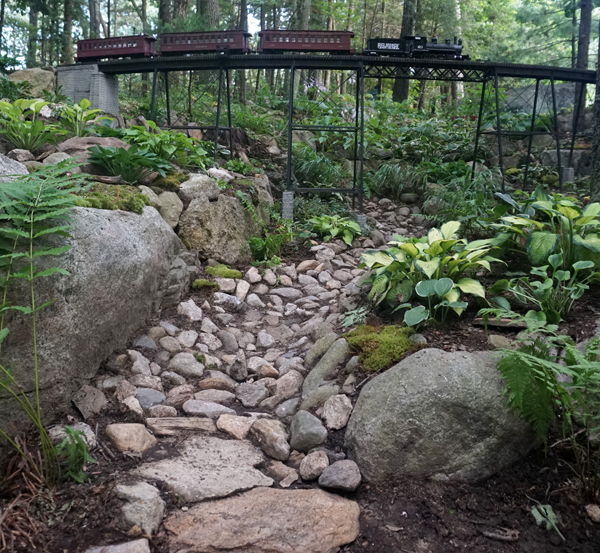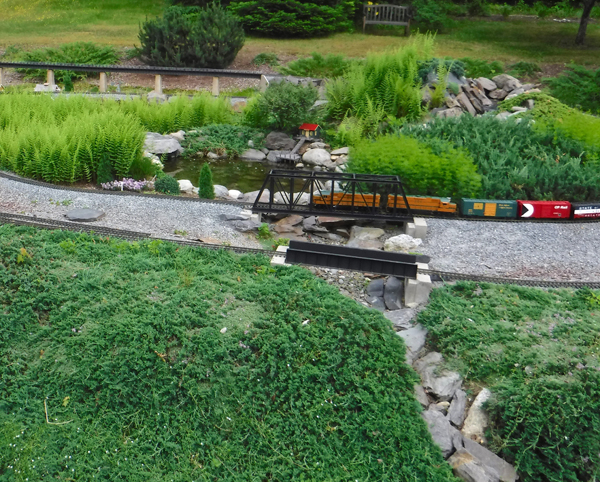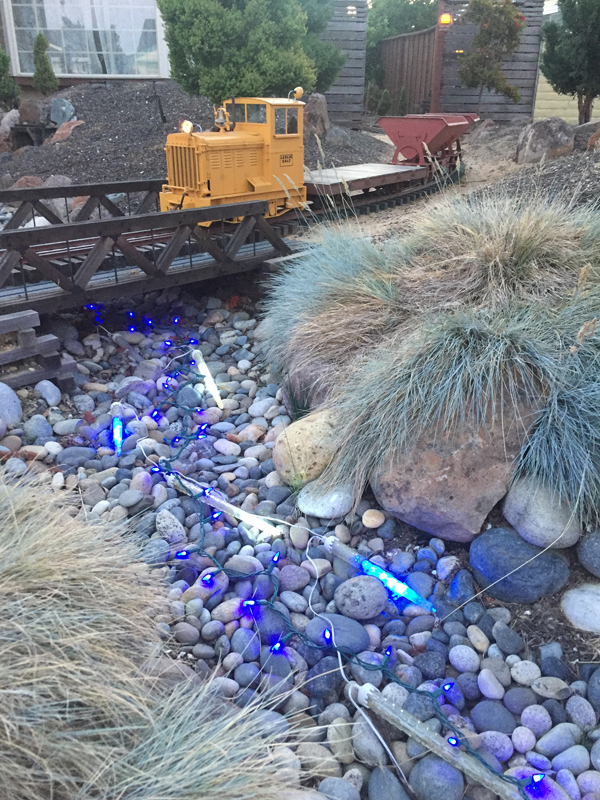Dry streams can make a splash in your railway! There’s no water, yet the path still flows. Running a ribbon of river rock unites your scenery and gives bridges purpose. The premise is simple. We mirror a watercourse, carve a curving “V” into the landscape, then dress it up. Here, I’ll share examples of how 11 railroad gardeners cut swaths of dry creeks for paths, winter flood swales, and created natural open spaces.
Add access and attention points
When Jack Verducci hosts an operating session on his Crystal Springs Railroad, parallel river beds help operators find footholds among the dwarf Alberta spruce (Picea glauca ‘Conica’, Zones 4-8) and low Elfin thyme (Thymus serpyllum ‘Elfin’, photo 1).
On Dart and Dottye Rinefort’s detailed OS&FRR, a fence keeps the parade from falling into a drainage ditch, which trickles (seasonally) under a railroad bridge (photo 2).
A gravel wash leaves just enough room for full-size boots on Mike and Holly Crane’s M&H Railroad (photo 3). Gravel connects three wooden bridges. Flat flagstones allow access from the lawn and abut the elevated line, which rides on concrete blocks.
Manage water, waste, and whatnot
Garden maintenance can be fun. By scooting under a high bridge, I can reach fallen leaves, pinch back Japanese maples, and pull weed tree seedlings near the blue-glass floor of the gorge (photo 1). Built like a water feature without rubber liner, it’s comforting to have a permanent faux-waterfall, mortared in place (and no weeds). I like to blow pine needles down and out to revive the blueness of the “falls.”
Edward Van Pelt (photo 2), wanted a feature without the mess of water maintenance. With a dry cleft in the mountain, leaf removal is also quicker. Tiny sweet alyssum (Lobularia maritima, Zones 9-11), several thymes (Thymus sp.), and white bacopa (Sutera cordata, Zones 9-11) can take foot traffic in between rocks. His four dogs know that it’s their pathway, as are other dry washes on the MVP Railway.
Welcome interruptions
A forest of trees, like these Atlantic white cedar (Chamaecyparis thyoides var., Zones 3-8) could hide your scene (photo 1). By extending the gold dust color of the farmyard on Roger and Jeane Samuelsen’s Golden Bear Railroad, a rough gravel road creates a stage in the middle of the woods. After a rain, workers drive the pickup to fill potholes so the farmer can get back to milking his cows.
To give us a visual treat, Rod Rickett interrupted a long stretch of track to feature a (dry) water trench under his Bitterroot Canyon Railroad (photo 2). Elfin thyme (Thymus serpyllum ‘Elfin’, Zones 4-9), a super flat groundcover, won’t obscure artistic wooden retaining walls, stained to match the ledger rock and engine cab.
During non-operation, the water feature on the outdoor G&O Railroad, slhrs.org, lives behind locked iron gates (photo 3). Park visitors peek in to see this seemingly dry stream, a focal point, even without trains. Water waits underground in the reservoir, but do we miss it? Notice how flat flagstones stack up and curve around bald cypress trees (Taxodium distichum, Zones 4-10), before disappearing behind the “mountain.” It’s movement without motion.
“Using drought-resistant plants and water conservation techniques,” June 2009
“Reuse your garden prunings,” Feb 2011
“How to model fallen rock,” June 2012
Landscape glass for mulch and xeriscaping: tinyurl.com/specialtyglass
“Glass rock slag,” sold at landscape-material yards and where fire-pit glass is sold
Google image or Pinterest photos of “dry creeks”
Dry pathways on a “wet” railroad
The Dry Creek Valley “flows” in Sonoma County, California, where former B&O Railroad man, Dave Stare, founded the Dry Creek Vineyard and then his garden railway, the Dry Creek Railroad.
Dave accessed all five raised planting beds on dry-creek pathways. Bruce Jahn scratchbuilt his wine-barrel car. Sadly, Santa Rosa’s 2017 firestorm took it away, but you can still visit Dave’s railway plan and photos in my Miniature Garden Guidebook’s “Design” chapter (KalmbachHobbyStore.com). Pair your research with a glass of Dry Creek Vineyard’s Fumé Blanc, an award winner.
Regional gardening reports
Zones listed are USDA Hardiness Zones
How do dry creeks let your landscape flow?
Ray Turner
San Jose, California, Zone 9
Concrete course
I wish I could say I’d planned for access to all areas of my railroad, but I didn’t. Where needed, I’ve built dry stream beds (and a wet one) to accomodate repairs/maintenance in the interior sections of the Mystic Mountain Railroad.
The largest dry creek is human sized for access to an air pump and track (I duck under the high bridge). The smaller dry creeks provided a good reason to install trestles. All stream beds are made from concrete, so I can walk on them.
Stan & Deb Ames
Chelmsford, Massachusetts, Zone 6
Drycreekscape
We’d built two water features in the SJR&P, and with full-size trees dropping leaves and debris, so we already had a lot of maintenance. Instead, we added a dry steam bed as a third “water” feature. A small sledgehammer embedded rounded stones (1-4″, on average) into the dirt. We softened the stream bed’s edges with Japanese forest grass (Hakonechloa macra, Zones 5-9), and lady-in-red ferns (Athyrium filix-femina var. angustum), which are dry shade tolerant for us. We also added hostas of varying sizes, not worrying too much about scale. [Full-size plants larger than the surrounding vegetation often grow near water and remain during the dry season.—NN]
Paul Smith
Lincoln, Maine, Zone 5
Flood swale
My pond was one of the first elements of the Bagley Mountain Division of the Maine Central Railroad, but I soon learned that year-round rain needs adequate drainage. I glued bridge abutment concrete pads with Liquid Nails, and lined the trenches with stone dust and rock ballast. The hay-scented ferns (Dennstaedtia punctilobula, Zones 3-8) I planted nearby have taken off and obstructed the view of the arched deck girder bridge on the far side, but two more bridges have a similar wash. Up front, juniper secures the embankments.
Eric Maschewitz
Foster City, California, Zone 9-10
Streaming animation
I had a need for drainage leading away from the house, so I planned a dry river on my 1:8-scale Squirrel Mountain Railroad from the start. This dramatic element is crossed by a Warren pony truss bridge. Blue fescue grass (Festuca glauca ‘Elijah Blue’, Zones 4-10) pours over the banks. During the holidays, I add blue LED string lights and chasing “icicle” lights. It flows!





